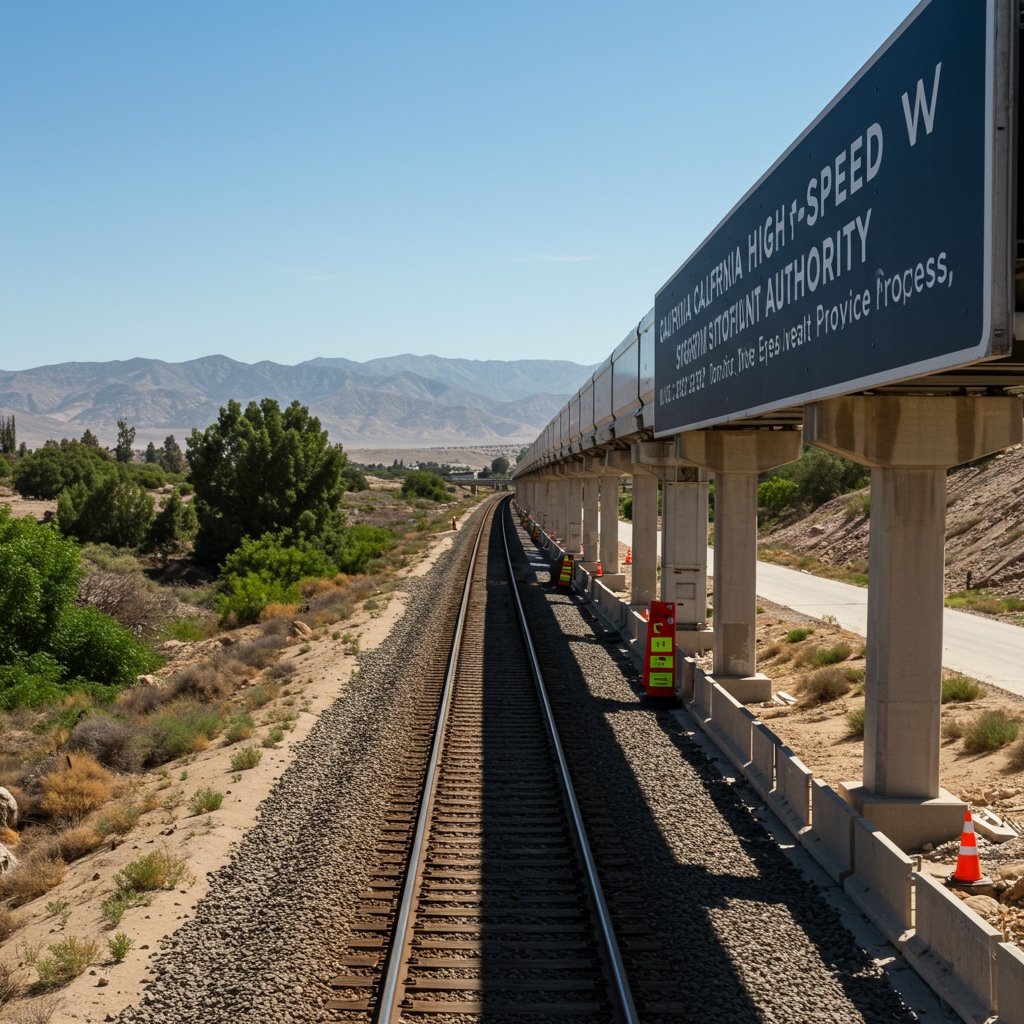California High-Speed Rail Achieves Critical Construction Milestone in Central Valley
The California High-Speed Rail Authority (CHSRA) has announced substantial progress this week on the foundational segment of the state’s ambitious high-speed rail project. Officials provided a detailed update on the 119-mile initial operating segment, which is set to connect the cities of Merced and Bakersfield within the vital Central Valley region. This announcement marks a significant step forward for a project poised to reshape transportation dynamics across California and potentially the wider West Coast. The Authority reiterated its commitment to a specific timeline, targeting the initiation of passenger service on this crucial initial segment by the fourth quarter of 2032. This target, however, is explicitly contingent upon the sustained commitment of both state and federal funding streams necessary to see the complex construction through to completion and prepare for operational readiness.
Detailed Construction Progress Highlights
Reporting from the field indicates that physical construction along the 119-mile corridor has reached a critical phase, with key structural elements rapidly approaching completion. The CHSRA confirmed that structural work across the segment, encompassing vital infrastructure such as towering viaducts designed to elevate the tracks above existing roads and waterways, as well as robust bridges traversing various geographical features, is now over 90% complete. This level of structural advancement signifies that the bulk of the civil engineering required to establish the elevated and separated guideway is nearing its conclusion. Following closely on the heels of this structural progress, the Authority highlighted that the next transformative phase of construction is actively underway. Track laying operations have commenced, with significant activity noted specifically near the city of Fresno. The process of installing the specialized high-speed rail track system is a complex undertaking that involves precision alignment and integration with the completed civil structures, paving the way for future train testing and eventual passenger operations.
Financial Context and Funding Commitments
Progress on a project of this magnitude is inextricably linked to securing and maintaining adequate funding. The recent announcement of construction progress follows a pivotal financial development: the approval of $5.1 billion in state bond funds specifically allocated to the California High-Speed Rail project. This significant infusion of capital, drawn from voter-approved bonds, is earmarked for critical next steps. These funds are designated not only for advancing the pace and scope of ongoing construction activities along the Central Valley spine but also for the crucial development and construction of modern passenger stations. These stations are vital components that will serve as the gateways to the high-speed rail network, integrating the system into urban centers and facilitating passenger access. The CHSRA has consistently emphasized that the project’s trajectory, particularly the targeted Q4 2032 launch date for the Merced-Bakersfield segment, remains conditional on the continued availability and timely allocation of necessary funding from both state and federal sources. Predictable and sustained funding is essential to avoid delays, manage costs effectively, and ensure the project stays on track towards its operational goals.
Station Development: Preparing for Passengers
A core component of the $5.1 billion state bond funding package is directed towards the development of passenger stations within the initial operating segment. While the bulk of construction has focused on the guideway itself, the development of functional, accessible, and modern stations is paramount for enabling future passenger service. Key sites targeted for this development include downtown Fresno and downtown Bakersfield. These stations are envisioned as integrated transportation hubs, designed to connect with local transit systems and serve as welcoming points for travelers. The design and construction of these facilities involve complex coordination with urban planning, local infrastructure, and community needs. Advancing the station development concurrently with guideway construction is critical to ensuring that when the tracks are ready for trains, the necessary infrastructure for passengers to board and alight is also in place, contributing to the feasibility of the 2032 service target.
Significance, Viability, and Future Outlook
The successful completion and operational launch of the 119-mile Merced-Bakersfield segment are widely regarded as absolutely crucial milestones for the entire California High-Speed Rail project. This initial segment serves as a tangible demonstration of the project’s engineering capability, construction execution, and potential operational performance. Its successful activation is seen as vital for proving the project’s viability to taxpayers, policymakers, and potential private sector investors. The ability to show a functioning high-speed rail line, albeit an initial segment, is expected to significantly enhance the project’s standing and improve prospects for securing the substantial future investment that will be required to extend the network. The long-term vision involves connecting the Central Valley line to major metropolitan areas such as the San Francisco Bay Area and the Los Angeles Basin, creating a truly transformative intercity transportation system. The completion of the Central Valley backbone is the essential first step towards realizing this broader vision. Ultimately, a fully connected California High-Speed Rail network has the potential to fundamentally alter West Coast travel, offering a faster, more sustainable, and potentially more convenient alternative to air and automobile travel for intercity journeys.
Challenges and Dependencies
While the recent progress report is positive, the California High-Speed Rail project continues to face inherent challenges common to large-scale infrastructure endeavors. These include managing complex construction logistics across diverse terrain, navigating environmental regulations, coordinating with multiple stakeholders, and, critically, ensuring a consistent and sufficient funding stream. The reaffirmation of the Q4 2032 target for the Merced-Bakersfield segment explicitly ties its realization to the continuation of state and federal funding commitments. Any disruption or delay in securing these necessary funds could impact the construction schedule and potentially push back the target date. Project officials remain focused on managing these variables while leveraging the recent state bond approval and advocating for continued federal support to maintain momentum and deliver this transformative infrastructure project. The progress achieved in the Central Valley serves as tangible evidence of the project’s advancement and the state’s commitment to building a high-speed rail future.


















